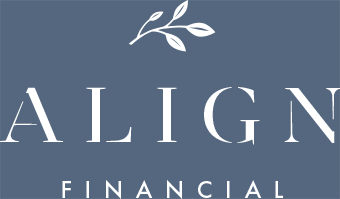This article is an update to a previous blog post, “How the Health Insurance Marketplace Works If Retiring Before 65.” It includes current data, as well as alternative health insurance options to the ACA marketplace.
Spending more time with your grandchildren. Taking that trip to the Grand Canyon you’ve been talking about for years. Sleeping past 7:00 a.m. on a Monday. There are plenty of perks to retiring early. But retiring before age 65 also comes with a few hassles, one of which is bridging the health insurance gap until you’re eligible for Medicare.
It’s a prospect that can seem overwhelming, especially amidst the mental and emotional struggles that leaving the workforce often presents. But just as it will be important for you to find your purpose in this next stage of life, it’s also important to make the right decision with your health insurance. Because as hard as it can be to consider, we will all need to rely on it sooner or later.
Here are 3 health insurance options to consider when retiring before 65:
#1: The ACA Marketplace
The health insurance marketplace is where you can go to get qualified health plans (QHPs), which are plans that meet the guidelines set by the Affordable Care Act.
Individual marketplaces vary from state to state. For example, Minnesota’s marketplace is MNsure, whereas its neighbor Wisconsin uses the federal marketplace set by the federal government, which is Healthcare.gov.
Typically, you need to enroll during the Open Enrollment Period, which is usually November 1st through December 15th. However, if you live in a state with its own health insurance marketplace, there may be different rules. These marketplaces can follow the same Open Enrollment guidelines as the federal marketplace, but they’re also able to extend the Open Enrolment Period past December 15th.
In addition, certain qualifying life events permit you to sign up for health insurance outside of the open enrollment period. For example:
- Loss of healthcare coverage
- Household changes such as marriage or divorce
- Changes in residence
The affordability of the ACA marketplace depends on what type of plan you select. In 2023, the average cost of a Bronze plan for someone who’s 60 years old is $850 per month, while the average cost of a Gold plan is $1,225.
However, you may be able to lower your costs if you qualify for the premium tax credit. Eligibility depends on two factors: the number of people in your household and your annual taxable income. MNsure’s Plan Comparison Tool can help you determine if you qualify for free or low-cost health insurance.
#2: COBRA
If you only need health insurance for a short period, you may want to consider COBRA, which is short for Consolidated Omnibus Budget Reconciliation Act. This can be a convenient option if you retire before 65 since COBRA makes it relatively easy to continue your existing coverage.
After you stop working, you’ll receive a COBRA election notice if you qualify. To be eligible for COBRA, you must have enrolled in your employer’s health plan when you were an employee, and the plan must be active for current employees.
You then have 60 days from your last day of coverage or from when you receive the notice (whichever is later) to continue or decline healthcare coverage. In some cases, you may be able to continue your existing healthcare coverage for up to 36 months after you stop working.
Though COBRA can make it easy to continue your healthcare coverage until you’re eligible for Medicare, it’s worth noting that premiums tend to be expensive. It’s crucial to weigh the potential costs and benefits, as well as your other options, before making your election.
#3: Workplace Health Insurance
If your partner or spouse is still working, you may be able to join their employer-sponsored health insurance plan until you’re eligible for Medicare benefits. Different companies have different rules regarding eligibility and benefits, so you’ll need to make sure this is a viable option.
Alternatively, you may choose to get a part-time or full-time job post-retirement that offers employee benefits. Just keep in mind you may need to meet certain criteria to qualify, so you may not be eligible for benefits right away.
Lastly, about a fifth of large companies that offer health benefits also offer retiree health plans for qualifying employees, according to a recent KFF survey. In some cases, you may even be able to keep your retiree benefits after you sign up for Medicare to supplement your coverage. If your employer offers such benefits, this can be a cost-effective and convenient way to bridge the gap between employment and becoming eligible for Medicare.
Align Financial Can Help You Plan for Healthcare When Retiring Before 65
Early retirement should be a time of relaxation and enjoyment, not financial stress and worry about medical bills. Therefore, proactive planning is crucial to ensure your healthcare needs are met during this pivotal period in your life.
Align Financial can help you plan for healthcare when retiring before 65, so you can make the most of your hard-earned retirement years. To learn more about how we help our clients retire to a life they love, please contact us. We’d love to hear from you.













